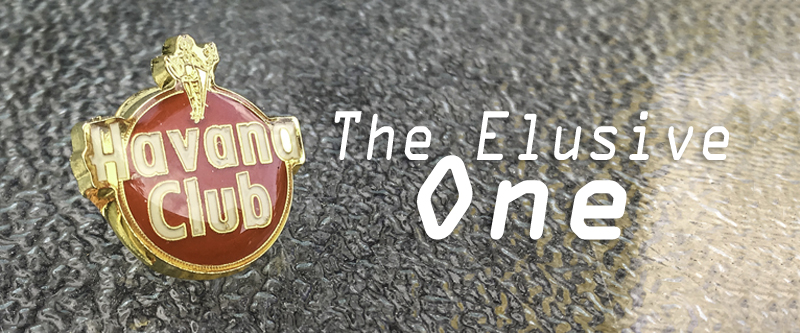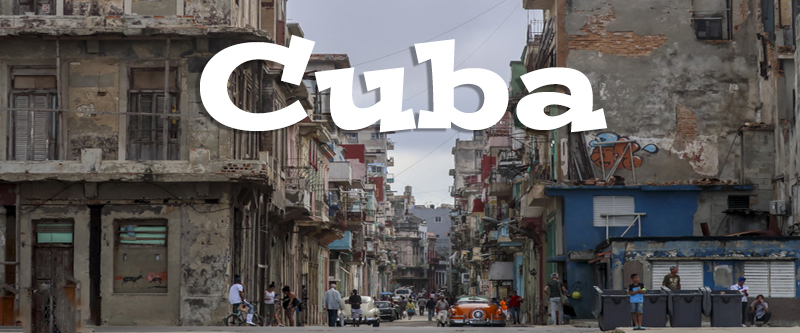The Cuban Queueing System – El Último
Are you familiar with the saying “el último”?
If your answer is yes then it means that you have experienced being in line, at least once, in Cuba. And you clearly know how the Cuban queueing system works.
On the other hand, if your answer is no, then let us guide you through one of the, if not the most efficient system of queueing in the world.
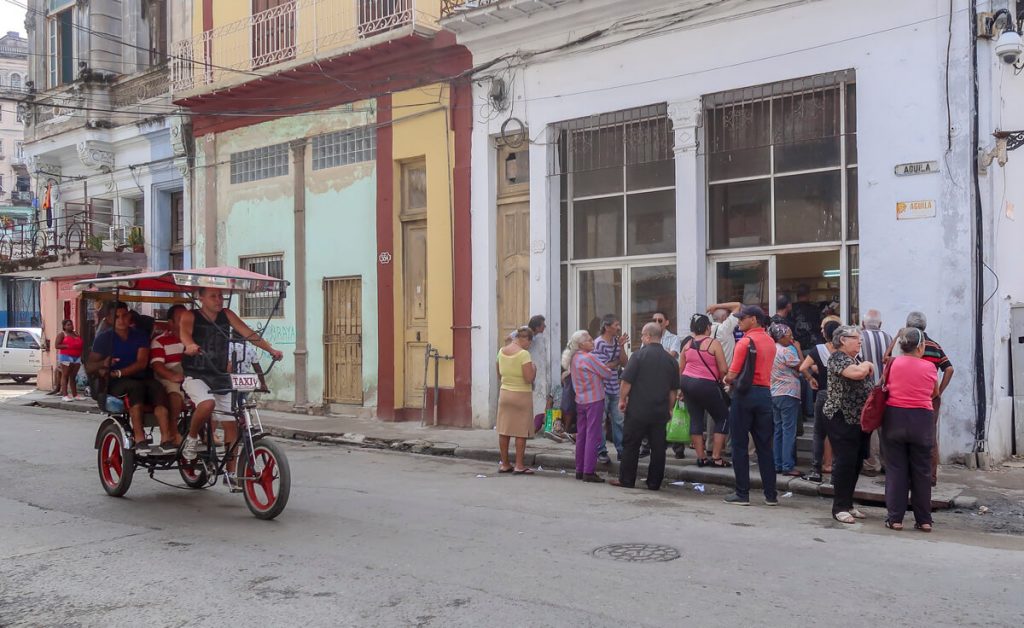
Queueing for Wi-Fi in Havana
It is on our first day in Havana when we learn one of the most important things about the Cuban way of life. We arrive at our Airbnb in Havana and the first thing we reali
We know we should have thought about this beforehand. But as we didn’t plan a lot in advance, we just didn’t think of researching all the details. And especially because we had booked accommodation through Airbnb, which normally always comes with Wi-Fi.
So, in our minds, we were sure that we’ll have Wi-Fi. We even had a plan B, in case the Wi-Fi at the property wouldn’t work – we’d just buy a sim card with data.
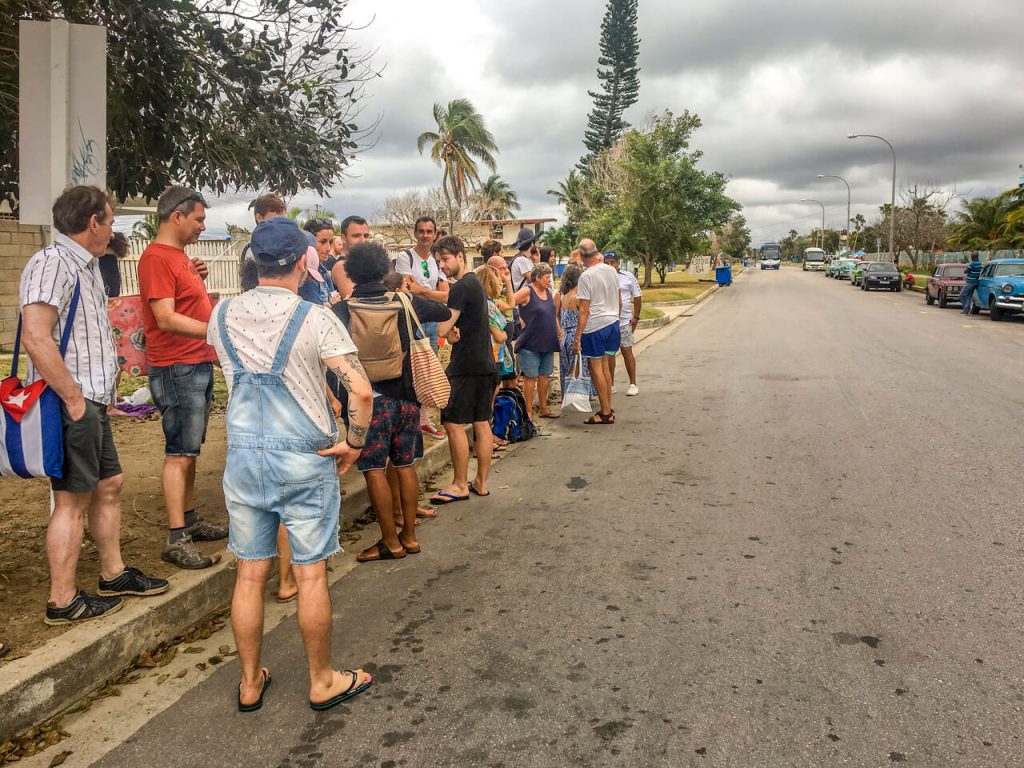
Oh, but we were in for a surprise!
The Airbnb host tells us that there is no Wi-Fi…anywhere. And there is no such thing as a sim card with data. “There is the ETECSA scratch-off card”, he says.
That sounds good. It doesn’t have to be a sim card, as long as we’ll have Internet access. We then ask how it works. He tells us that there are designated kiosks that sell the card. And if we can’t find any open, we will need to go to the ETESCA office.
Once we have the card, we’ll have to go to one of the designated areas (government-approved Wi-Fi hotspots). There we can connect to the Cuban Internet.
Can you imagine a life, nowadays, without the Internet? Or one in which you would only be able to access it in designated places? Besides the fact that there aren’t so many Wi-Fi spots, the Internet is also terribly slow. It is expensive and it will often have restricted access to certain websites.
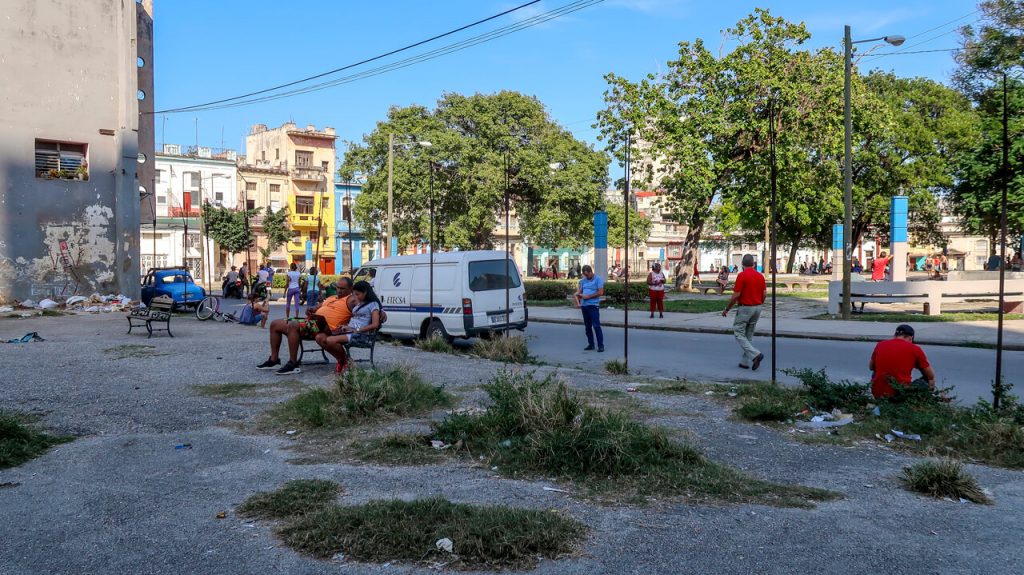
Now, back to our story. We head out to the ETESCA kiosk, which is a 10 minutes walking distance from our accommodation. There is a lady inside the kiosk, but she doesn’t seem very eager to serve us.
Three more persons are waiting to be served. None of us dare to ask her what is happening. Is she on her lunch break, is it closed? She sees us there, but she doesn’t say anything.
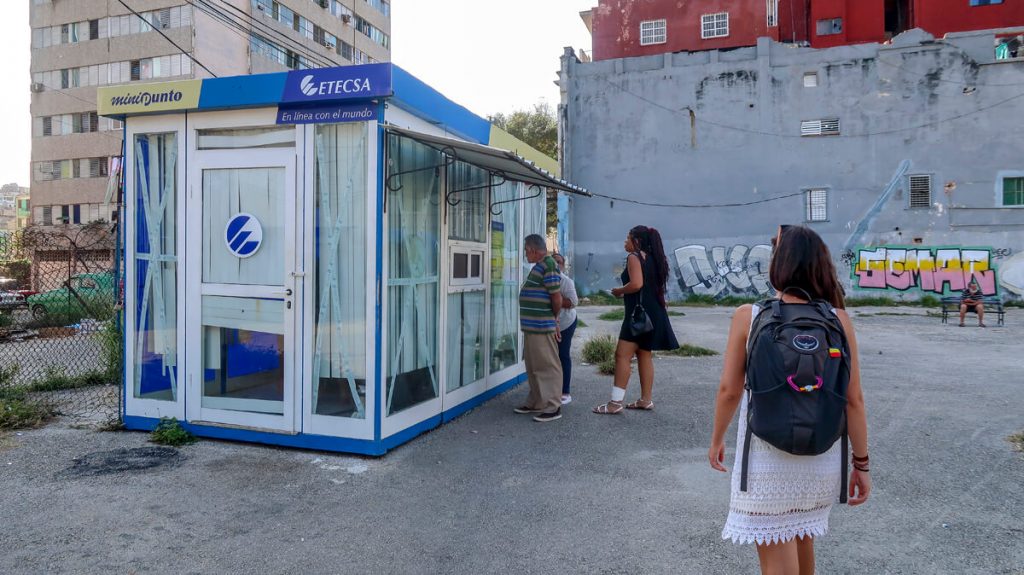
After waiting there for a while she finally opens the window and tells us that she can’t sell any cards. We ask why, but she doesn’t want to give us a reason.
She just tells us that we will need to go to the ETESCA office. That is where we will be able to buy the card from.
Learning about the Cuban queueing system
We follow her instructions and fire up Google Maps. We later arrive at this huge blue building, which is the ETECSA office. In front of the building, there are as many as 20 people waiting to be served.
At first, everything seems chaotic. We are the only foreigners there and we have no idea what we need to do. There are people coming out and people going inside the building. All this under the strict supervision of a security guard that stands next to the main door.
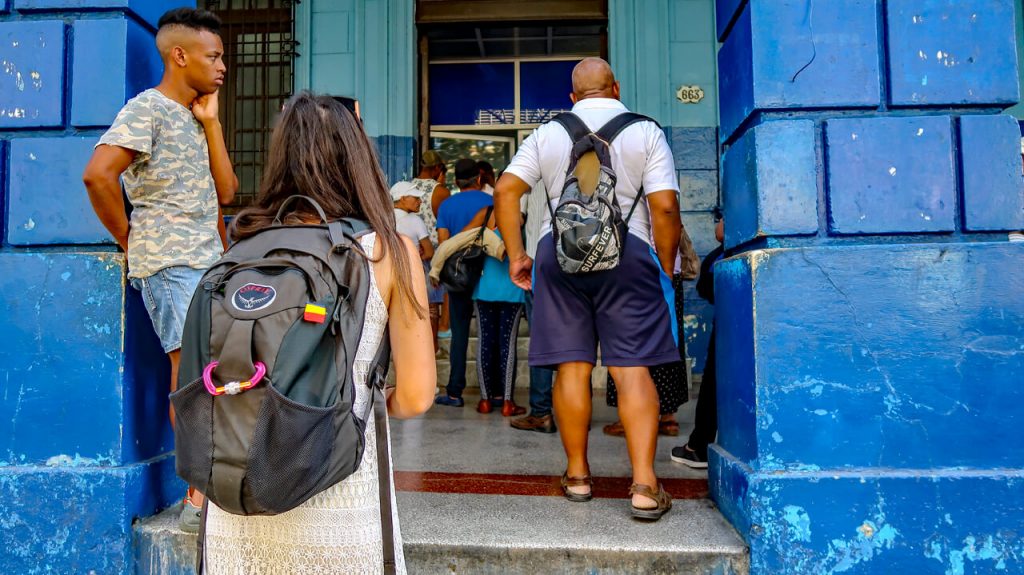
The first time we hear the words “el último?”
Looking around and not understanding if there is a line or not, we feel rather lost. Nobody tells us anything, even though it is clearly visible how disorientated we are.
So we continue to struggle understanding how this works. Not long until we see a new person coming towards the building. As he approaches the gathering
“El último?”, which translates to “The
And so we ask “Quien es el último?”, this translating to “Who is the last one?” and the gentleman that had just arrived answers.
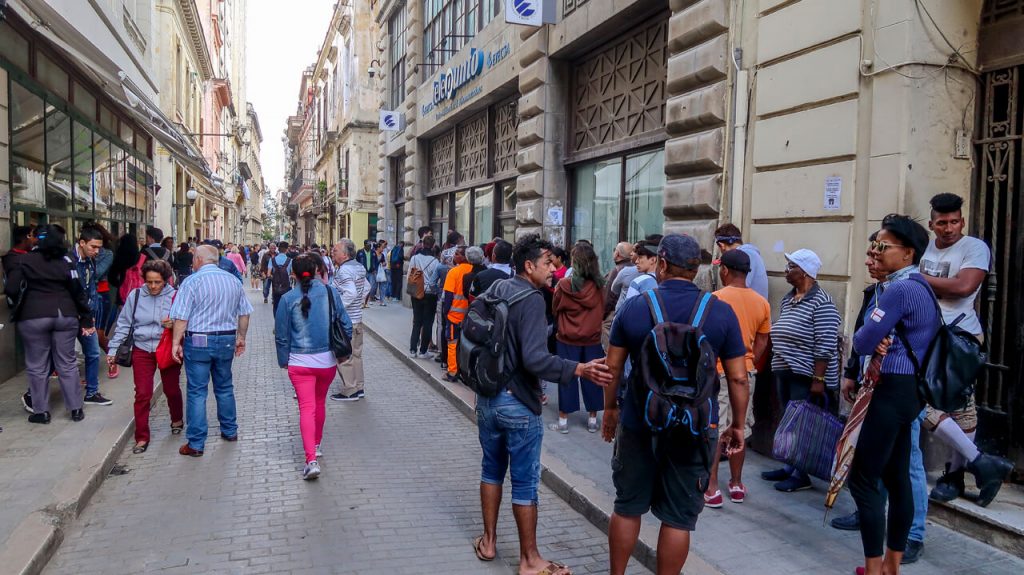
We have officially made it in the queue!
Nobody is in line and people sit wherever they want. They come and they leave as they please. Even though it seems chaotic, it is by far, one of the best queueing systems we’ve seen so far.
The lines in Cuba are most of the time long. So you’re looking at around 2, 3 hours of waiting for your turn. This Cuban queueing system gives you a lot of flexibility. One which you can’t have when looking at our queueing in a line system.
You can’t leave a line in Europe or in the US and then expect to come back in the same spot where you left from. You go right at the end of the line because if you cut the line there will be trouble.
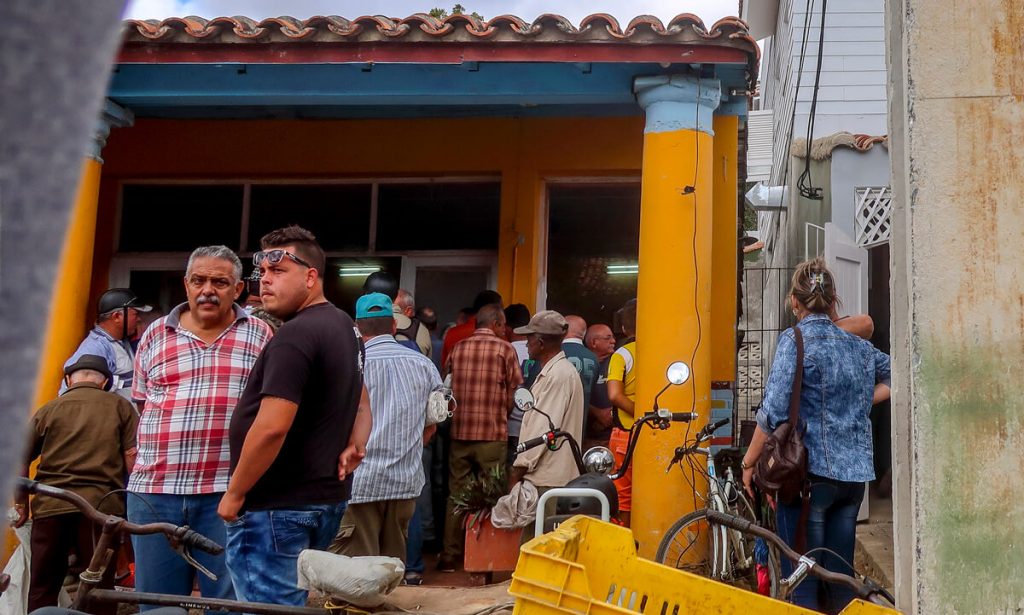
And then we learn one more thing. As soon as another person joins the queue, she asks us (because we were now the last ones) who is the person that’s in front of us in the queue?
We tell her and then we understand one more thing. It is as important to know the person before the last one. In case “el último” decides to leave the queue for any reason.
Usually, if anyone decides to leave, they will make sure to let the person that joined the line after them know who they need to follow.
In general, this system works great. And having waited in many queues in Cuba we can honestly say that it is the most relaxed way of queueing.
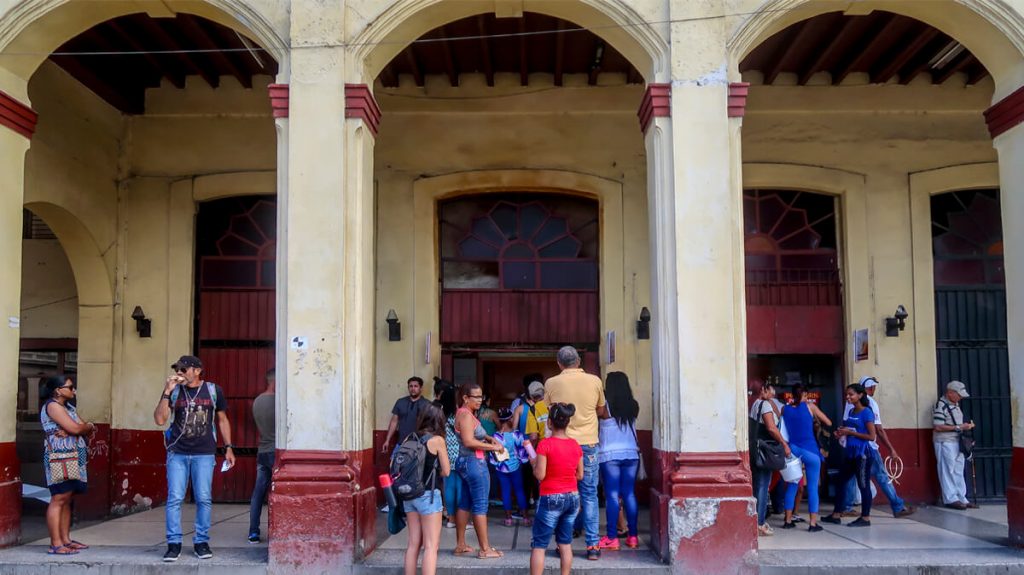
So remember for when you will find yourself queueing anywhere in Cuba, and we guarantee that you will, “el último?” is the most important question that you need to know.
Share your opinion
Now that you know about the Cuban queueing system, do you think you are going to try it if you’ll go to Cuba? Or have you already been there and heard about it? If so, please share your experience in the comments down below.


